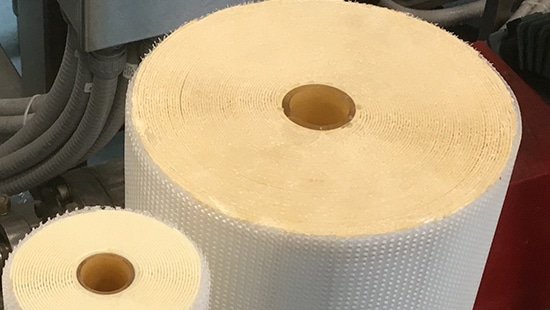What All Dairy Processors Using Membranes Should Know About NPEs

Membrane care is an important part of optimizing the performance of your dairy operation and meeting your business goals. At Ecolab, we are aware that many of our dairy customers are looking for cleaning products and programs that increase productivity, reduce downtime and extend membrane life. Customers must also navigate industry standards, consumer preferences and a changing regulatory environment. One of the latest topics facing increased regulatory scrutiny is the use of nonylphenol ethoxylates, more commonly known as NPEs. If you aren’t familiar with NPEs, why they matter, or what NPE-free alternatives are available to you, here’s what you should know.
What NPEs are and where they are found
NPE stands for nonylphenol ethoxylate, a surfactant often used in teat dips, environmental cleaners and membrane cleaners. As a surfactant, NPEs reduce the surface tension between two liquids or a liquid and solid surface, allowing for easier spreading, wetting and better miscibility of otherwise incompatible liquids.
Day after day, dairy processing membranes work hard to fractionate proteins, separate minerals and fats, remove impurities, and more. In the process, they get fouled and soiled impacting productivity. And due to the complex nature of membrane surface soils, cleaning them is especially challenging to restore performance. For decades, NPEs have been the go-to surfactant with Ultrafiltration (UF) and Microfiltration (MF) applications for their ability to tackle the tough-to-remove fat-based soils found in dairy operations.
When used daily, however, surfactants such as NPEs in membranes, teat dips, and other cleaning applications can result in inadvertent residues within whey proteins and other dairy products you produce if not thoroughly rinsed. In “down the drain” applications, NPEs may enter rivers and lakes through wastewater discharge.
The impact of NPEs on the environment, animals and humans
While NPEs were once commonly used in household laundry detergents, the Environmental Protection Agency (EPA) and detergent manufacturers cooperated to eliminate their use in 2013 because of their potential harm to the environment. When released into wastewater, NPE breaks down to form nonylphenol (NP) which, according to the EPA is persistent in aquatic environments, moderately bio-accumulative (it will build up in living organisms) and toxic to aquatic organisms1.
In humans, direct contact with NPEs can irritate skin and eyes. Even more concerning, NPEs and NPs are considered endocrine disruptors. That means they can mimic or interfere with the body’s endocrine (hormonal) systems, potentially causing developmental, reproductive and other health risks2. NP has been detected in human breast milk, blood and urine, and it is associated with reproductive and developmental issues in rodents3.
What is being done about NPEs
NPE use isn’t currently restricted in the U.S. for many applications, but the EPA is continuing to work towards phasing them out. They also have been banned in many international markets, including the European Union and Japan, and there is growing demand among U.S dairy producers to move away from the use of NPEs. Many refuse to use NPE containing cleaning products and to purchase milk and other dairy ingredients that aren’t NPE-free, especially those exporting to other countries.
Due to increased consumer awareness and a desire to do the right thing, many food manufacturers are demanding lower NPE concentrations in the whey powders and dairy ingredients they purchase to produce energy drinks, infant formulas, protein powders and other popular products. With the demand for higher standards within the industry and among end-users, we expect more stringent FDA regulations to be introduced soon.
What you can do about NPEs as a dairy processor
As a dairy processor, it’s important to know if the cleaning products you use or the milk and ingredients coming from your suppliers contain NPEs. To understand what is happening downstream and to ensure the products you use meet your expectations, Ecolab recommends third-party testing to verify your processes and products are not formulated with NPE. If you have questions about what is involved, feel free to reach out to your Ecolab representative for guidance and advice.
There are effective, viable NPE alternatives
NPEs have been around for years and are known as “workhorses” for their cleaning effectiveness. In fact, until recently, many membrane cleaning solutions formulated without NPEs compete with the cleaning performance of NPEs. Today, however, there is a viable and high performing alternative to NPEs.
At Ecolab, we’ve been able to consult and partner with customers to effectively eliminate the use of NPEs from their membrane cleaning processes while also improving efficiency. As an example, a large dairy processor increased the average permeation rate of its UF membranes by 11.3% and increased its processing capacity by 1.4M gallons of milk per year. It was accomplished by our UltrasilTM 09 NPE-free surfactant. Read our case study to learn more.
Ecolab's Membrane Cleaning Alternative
Membranes were introduced to the dairy industry approximately 40 years ago, opening up new opportunities for whey protein. Once a waste product used to fertilize fields, today it is used in everything from sauces to baby food to nutritional bars and shakes.
While it was a positive development for the industry, it also presented challenges that include maintaining expensive membrane systems to keep them operating efficiently. At Ecolab, we are committed to protecting human health and the environment, and we’ve made it a priority to develop advanced membrane cleaning technologies that are both effective and formulated without NPE. If you’re interested in exploring these options for your operation, contact your Ecolab representative to get started.
1 https://www.epa.gov/assessing-and-managing-chemicals-under-tsca/risk-management-nonylphenol-and-nonylphenol-ethoxylates
2 https://www.niehs.nih.gov/health/topics/agents/endocrine/index.cfm
3 https://www.epa.gov/assessing-and-managing-chemicals-under-tsca/fact-sheet-nonylphenols-and-nonylphenol-ethoxylates



